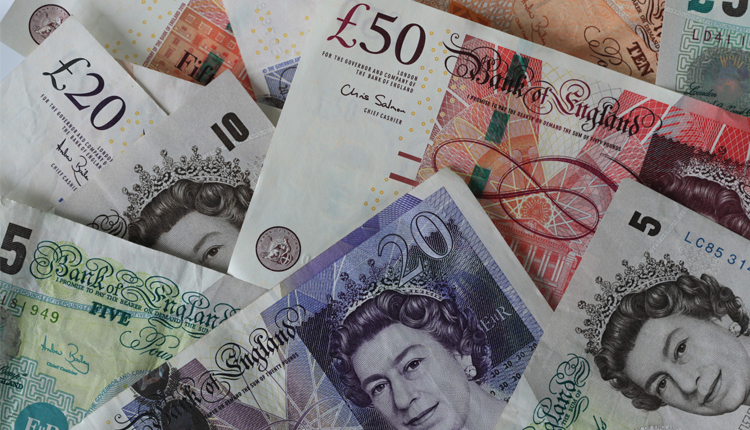Pound sterling could sink to as low as $1.15 as political divisions deepen, an analyst warned on Wednesday.
British Prime Minister Theresa May’s leadership is under intense scrutiny from a number of disgruntled members of her own party — not least former Foreign Secretary Boris Johnson.
Stephen Isaacs, chairman of the investment committee at Alvine Capital, warned that the British pound could tumble to $1.15 — which represents a decline of more than 10 percent from current levels — by early 2019 if U.K. lawmakers on both sides quash May’s Brexit deal.
Isaacs said that the final test for the U.K.’s exit from the EU — and May’s leadership — will be a vote in the British parliament. He said the U.K. opposition Labour Party would likely exploit this “open goal” and vote it down, adding that he expected several euroskeptic lawmakers from May’s Conservative Party to follow suit.
“The prime minister has to resign, her key policy will be in absolute tatters,” Isaacs told CNBC’s “Squawk Box Europe.” He said May’s ousting won’t lead to a general election “because turkeys don’t vote for Christmas,” referring to her party’s withering majority in 2017’s snap election.
“You get an election for leadership of the Conservative Party, and I think Boris (Johnson) will be prime minister, that’s my case,” he said. Johnson on Tuesday told the Conservative Party’s annual conference that May’s current Brexit deal is “politically humiliating” and a “constitutional outrage,” in a speech that was viewed by observers as a potential leadership challenge.
Isaacs compared the possibility of May stepping down to resignations as notable as that of former British prime ministers Neville Chamberlain and Anthony Eden.
Indeed, just today May faced an explicit call from fellow Conservative lawmaker James Duddridge to resign. Duddridge submitted a letter of no confidence in the prime minister to the Conservative Party’s parliamentary group.
“I think that sterling will initially rally when we have the deal, perhaps up to mid-1.30s,” Isaacs said. But he added that upside for the U.S. dollar amid a tightening Federal Reserve would likely put downward pressure on the currency.
“We’ve seen what’s happened to emerging markets, I think any chance to sell sterling on that kind of scenario should be taken, because as soon as it goes down in flames in parliament in possibly January, early February, sterling’s gonna have a real bath, and I think we go down to 1.15 level.”
The lowest point sterling has reached this year is $1.266, which it hit on August 17. That move was on the back of fears of a hard exit for the U.K. from the EU that would result in the event of a “no deal” scenario.
The currency is currently up 1.73 percent against the dollar year-to-date. It was last seen trading 0.1 percent higher at $1.299 following a speech May gave to the Conservative Party Conference on Wednesday.
Chequers ‘dead in the water’
Another analyst added to Isaac’s concerns, noting that the U.K. was “completely stuck” in its talks with the EU.
“We have to assume that the Chequers proposal in its current form is effectively dead in the water,” Stephen Gallo, European head of forex strategy at the Bank of Montreal, told CNBC in an email Wednesday.
“Brussels has said it is unacceptable, and because it weds U.K. trade in goods to elements of the ‘four freedoms’ and ECJ (European Court of Justice) law, it won’t get enough votes in the lower house for passage.”
One major sticking point in the Brexit talks is Northern Ireland. Negotiators on both sides are trying to avoid a hard border that would separate mainland Ireland from its northern neighbor. The issue is a sensitive one, particularly for the British side, due to the historical significance of the sectarianism that had once heavily clouded Ireland.
Both the U.K. and the EU want some form of “backstop” that would prevent a hard border from being put up. But the two parties are at odds over what that backstop should look like, the main contention being May’s insistence that Britain leave the EU’s customs union, which charges a common external tariff, and single market, which promotes the free movement of goods, capital, services and labor within the bloc.
Gallo didn’t specify a level as low as $1.15, but said sterling could drop as low as $1.20 prior to the U.K striking a final Brexit deal.
“We estimate that GBPUSD will rally to about 1.30 once an agreement is finally reached, but we see this rally occurring after the GBP has already dropped to the 1.20 area before a deal is struck,” he said.
Gallo added that there was “ample opportunity” for a so-called “fudge” that results in a soft Brexit, which would see alignment between the U.K. and EU mostly continuing after their eventual divorce. However, he said that he expects Brexit talks to extend all the way into March 2019 — the deadline for the U.K.’s ultimate withdrawal from the EU is March 29.
“We anticipate that the forthcoming October and November EU summits will not offer enough time for the ‘fudge’ to be agreed, and we therefore think the negotiations will go right down the wire into March 2019,” Gallo said.
Source: CNBC
